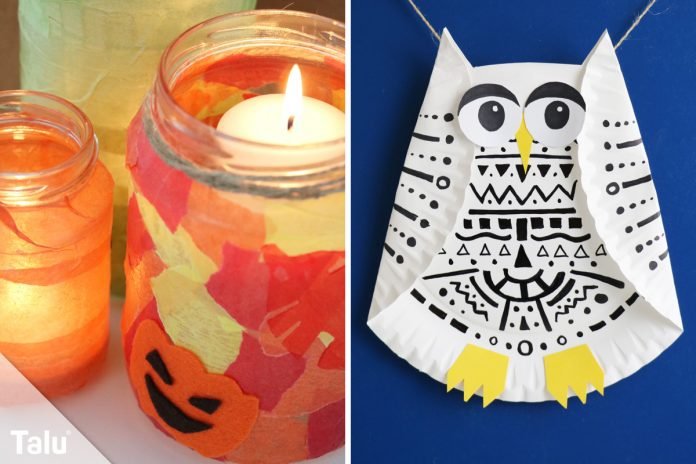
Handicrafts with children with plaster: Five creative > Reading time: 2 minutes
Working with plaster bandages is the easiest way to work with plaster. Plaster bandages are available in different sizes in the pharmacy and can be cut to size with scissors depending on the crafting project. All you need is a large bowl of water in which the plaster bandages are moistened.
Forms with plaster bandages
The workplace should be laid out with newspaper beforehand. Then you can wrap creatively according to your mood. Examples would be:
- Plaster cast of body parts
- Making a vase by wrapping an empty glass (You can decorate the vase before it dries by pressing in decorative materials such as glitter pearls, shells, small stones or simply pressing it in with your fingertip.)
- wrap a soft toy and make a sculpture with it
It is recommended to use at least three layers of plaster bandage, so that the figure really stable becomes. After drying completely, which takes about two to three days, you can paint, glue or spray paint on the form.
Make your own plaster bandages
If you don’t have plaster bandages, you can easily make them yourself. Gauze bandages or the fabric of an old T-shirt can be used. Mix gypsum powder from the hardware store in a ratio of 1 part water to 3 parts gypsum, dip the material in the mass until it is completely covered and then use it like gypsum bandages. The only difference is that self-made plaster bandages cannot be processed as finely as finished bandages.
Make plaster pendants
Fill a shoebox lid with sand and smooth it out. Lightly press the cookie cutters into the sand. Mix gypsum mass from the hardware store in the ratio of one part water to two parts gypsum. Pour gypsum into the molds. Insert a wooden stick at the top for the hanging hole. Now wait until the plaster has dried and then paint the pendant. Or you wait until the plaster has hardened somewhat and then carve out contours or patterns in the figure. After drying completely, everything can be painted or varnished.
Make plaster reliefs and make plaster casts
Put the sand in a shoebox, smooth it out and moisten the sand so that it is easy to form. Now carefully with the Push your foot or hand into the sand. Mix gypsum in the ratio of one part water to two parts gypsum and pour it into the sand. Let it dry out and excess sand with a Remove the brush. If the plaster casts are to be hung up, a string must be pressed into the plaster before curing.
Make plaster figures
If you want to model with plaster, mix one part of the plaster with three parts of water. Then the gypsum mass can be processed similar to that of plasticine or like clay. Funny plaster figures can also be made by pouring plastic bottles.
To do this, stir only two parts of gypsum into one part of water, pour out the bottles (small beverage bottles, yoghurt cups or milk bottles) and remove with scissors after hardening. Afterwards, the figures can be painted in a funny way or covered with funny eyes, cotton wool or wool.
Design plaster pictures
Pour the gypsum mixture into an empty cardboard box (shoe box or cheese packaging) about three centimeters high and let it harden for two to three days. Then carefully tear down the cardboard. Now you can paint on the plasterboard with water colors. Or you can scratch outlines or patterns with a nail.
You can also create a picture with natural materials. To do this, press grasses, bark, dried berries or similar immediately after pouring. carefully into the gypsum mass and then let it harden.
Photo credit: warongdech / stock.adobe.com
PS: Quality management is important to us!
Please let us know how you like our contribution. To do this, click on the asterisks shown below (5 asterisks = very good):
RELATED ITEMS
-

Crafts with children in autumn – 7 creative ideas
Autumn is clearly the best time of year for handicrafts – nature supplies the material, and autumn is also the place to celebrate numerous festivals for which…
-

45 DIY ideas for tinkering with children autumn – house decoration more
Autumn will soon be here with its love of colors. This wonderful season not only enchants with its luxurious colors, but also…
-

Easter tinkering with children: paper plate Easter bunnies – vitamin scout
Easter paper plate artwork This Easter bunny artwork made of paper is so easy to make and perfect for toddlers or preschoolers! The…
-

Make money gifts – creative diy instructions, Kreativraum24
Bottle with money fly With this money gift idea, all bottle gifts can be upgraded enormously. The money fly, made from 2 banknotes…
